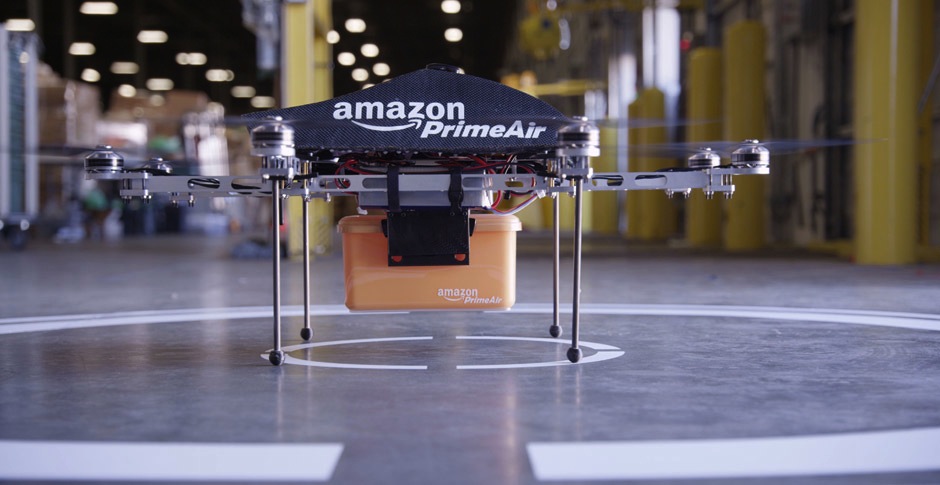Ready for Takeoff? New Rules Would Limit Some Uses for Drones

The Obama administration has announced a much-anticipated set of rules to govern the use of commercial drones in the United States. But the proposed regulations would restrict some parts of the burgeoning industry — notably, drone delivery services, like the one being tested by Amazon.
Under the Federal Aviation Administration's (FAA) proposal, released Sunday (Feb. 15), drones up to 55 lbs. (25 kilograms) would be able to fly up to 100 mph (160 km/h), up to an altitude of 500 feet (150 meters).
Those small, unmanned aircraft would only be able to fly during the day and in the line of sight of the operator. Drone operators, who must be 17 or older, would also have to pass a written test and be vetted by the Transportation Security Administration, FAA officials said. [5 Surprising Ways Drones Could Be Used in the Future]
"We've been waiting a long time for these rules to come out," said Helen Greiner, co-founder of iRobot and current CEO of CyPhy Works, a robotics company that makes small tethered drones.
No longer just associated with military operations, drones have the potential to monitor wildlife, explore archaeological sites, inspect buildings, shoot aerial video, conduct search-and-rescue operations and spray crops with fertilizers, among a broad range of commercial and scientific applications. Venture capital investments in the drone industry topped $108 million last year, according to the CB Insights database. But drone developers have been stuck in regulatory limbo for years, as the FAA had banned the commercial use of unmanned aerial systems, or UAS, until it could figure out a set of rules for the industry.
Now, with the new set of regulations, engineers will finally have a framework to work with when they are designing products, and investors will know what they're getting into when they put money into drone companies, Greiner told Live Science.
The new rules, however, would restrict some of the more ambitious uses of drones.
Get the world’s most fascinating discoveries delivered straight to your inbox.
"I don't want to look a gift horse in the mouth," said Missy Cummings, a former fighter pilot who is now the director of the Humans and Autonomy Lab at Duke University. "It's a good first start, but it's still holding back big segments of the industry."
One specific problem with the regulations as they stand is the line-of-sight requirement, Cummings told Live Science. That rule means a person operating a drone must be able to see it, which not only eliminates the possibility of package delivery drones, but also defeats a major potential benefit of unmanned aircraft: the ability to send drones to places that are inaccessible to people.
That line-of-sight requirement would rule out the use of drones to inspect pipelines over vast oil fields in Alaska. (The FAA did grant one drone company approval last summer to conduct surveys for BP on an oil field in Alaska's North Slope, the first in a handful of exemptions to the agency's ban on commercial drones.) The rule would also prohibit building inspections that involve flying a drone around and behind a smokestack or using a drone for search and rescue in the woods, said Brendan Schulman, an attorney and expert in drone policy.
"As technology improves, it seems to me that that restriction will need to be relaxed in order to enable some very valuable drone applications, particularly for autonomous systems," Schulman told Live Science in an email.
Under the new rules, Amazon wouldn't be able to operate Prime Air — 30-minutes-or-less drone delivery service the company is developing — in the United States.
"The FAA needs to begin and expeditiously complete the formal process to address the needs of our business, and ultimately our customers,'' Paul Misener, Amazon vice president for global policy, said in a statement.
"We are committed to realizing our vision for Prime Air and are prepared to deploy where we have the regulatory support we need," Misener added. In a letter to FAA regulators in December, Misener said that Amazon was already conducting outdoor tests of its Prime Air system in countries "with regulatory environments more supportive" of drone innovation.
Greiner said it might make sense for the FAA to restrict drone delivery systems for now because "no one has proven we could do it yet." But, she added, the FAA could do more to allow companies to test these experimental systems on private property within the United States.
The FAA's rules likely won't become law for at least another year, and the agency will post its proposal in the Federal Register, welcoming public comment for 60 days. The FAA specifically has asked for industry leaders to weigh in on whether the rules should permit drone flights beyond the operator's line of sight and, if so, what the appropriate limits should be.
"We have tried to be flexible in writing these rules," FAA Administrator Michael Huerta said in a statement. "We want to maintain today's outstanding level of aviation safety without placing an undue regulatory burden on an emerging industry."
Separately, the White House released a presidential memo addressing privacy issues concerning drones; it notably promised transparency about when and where domestic drone missions fly.
Follow Megan Gannon on Twitter. Follow us @livescience, Facebook & Google+. Original article on Live Science.



